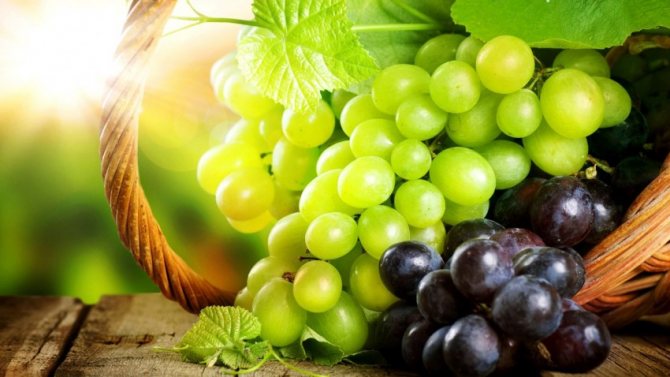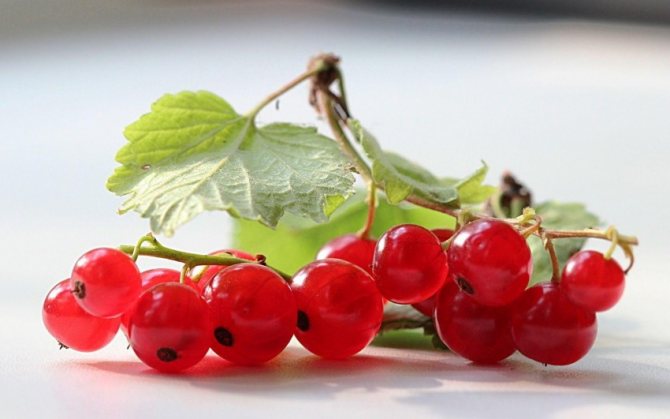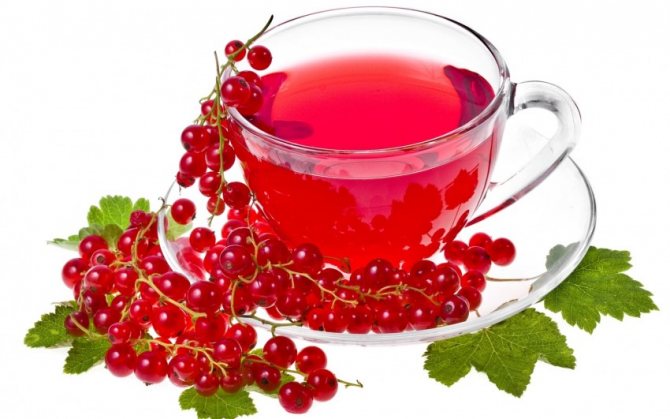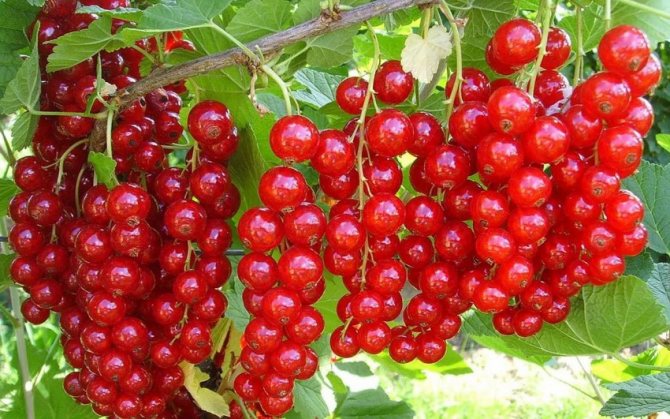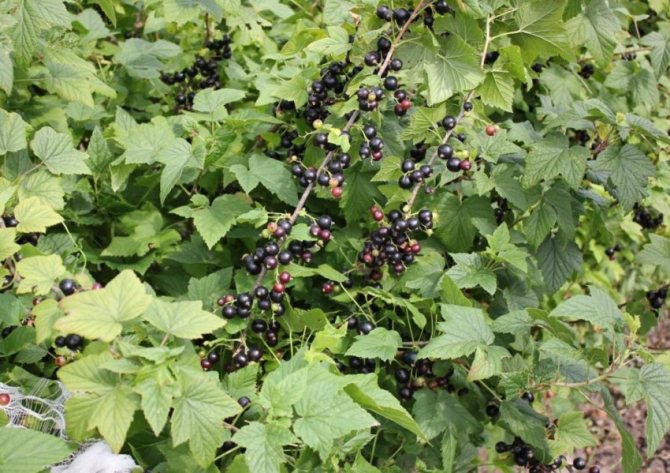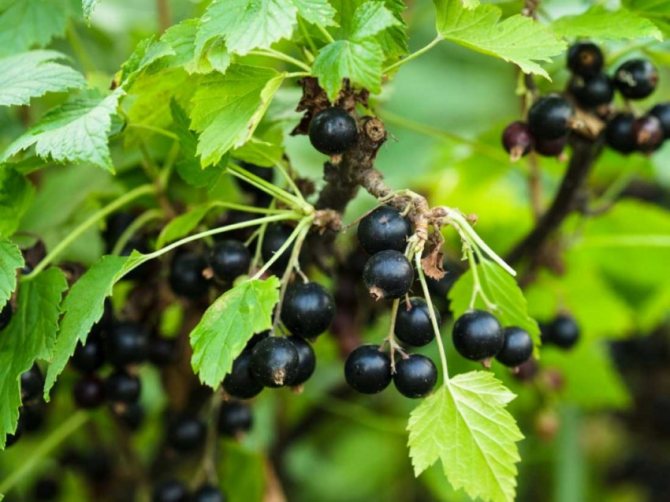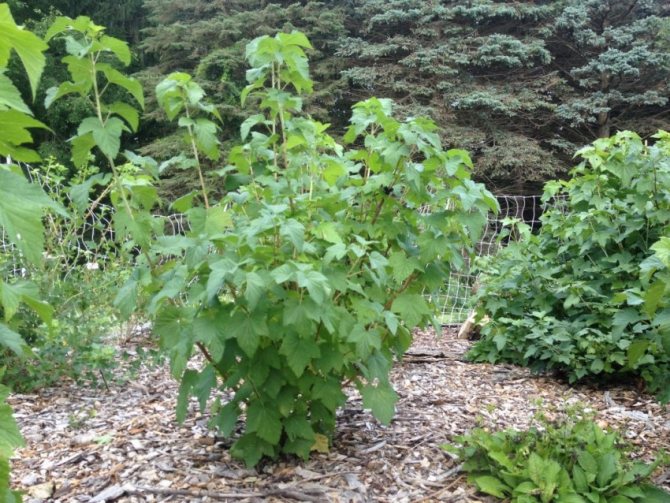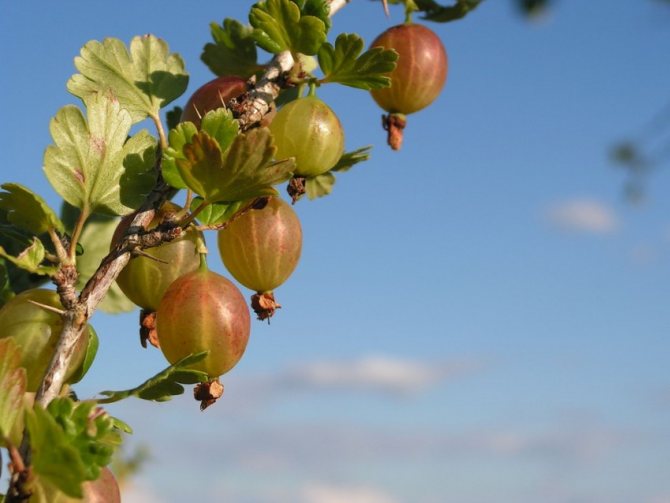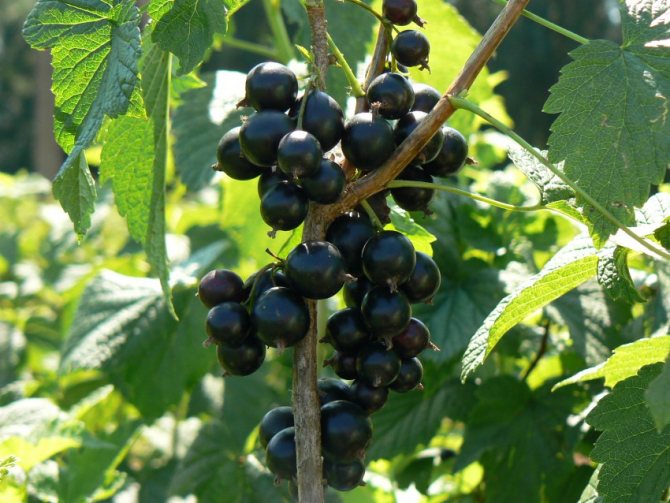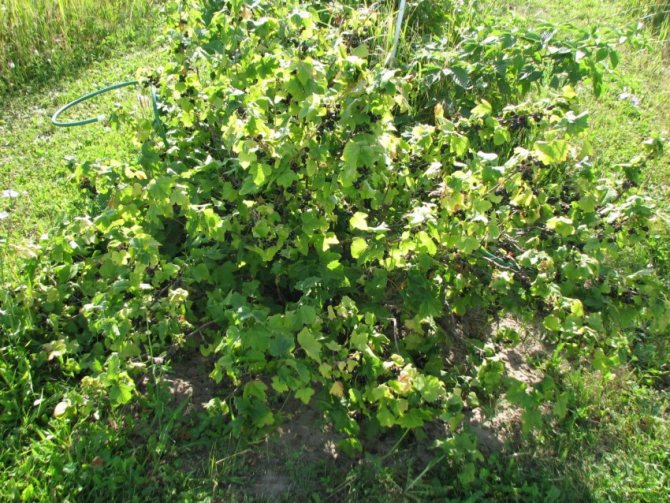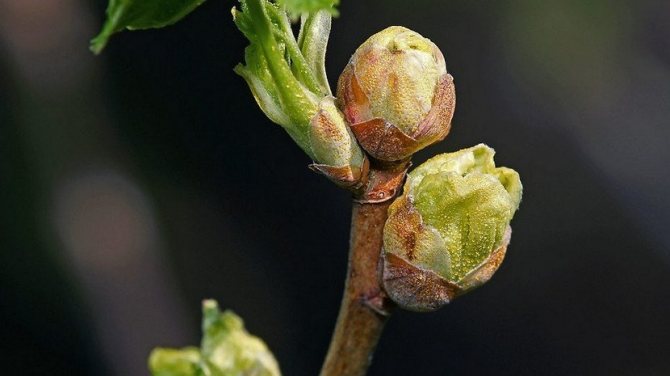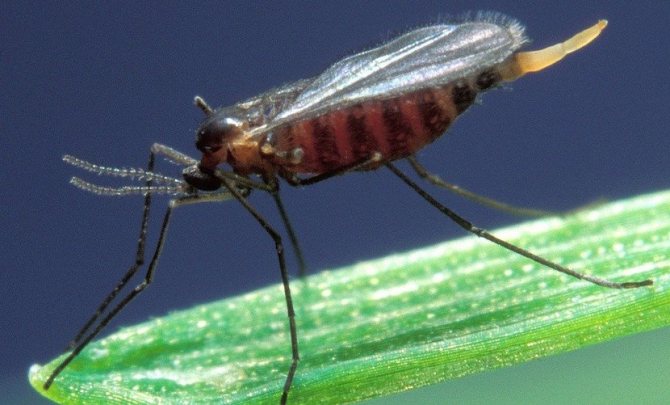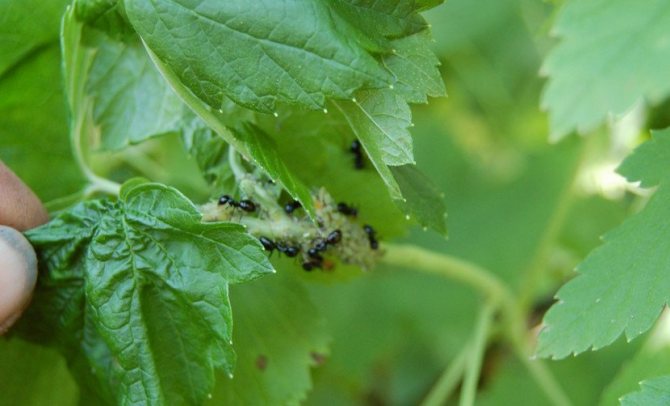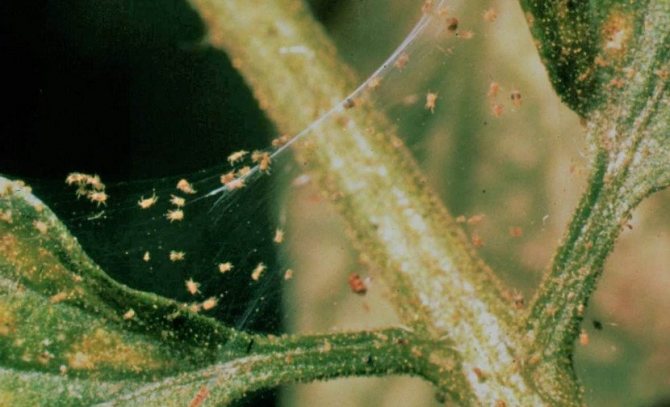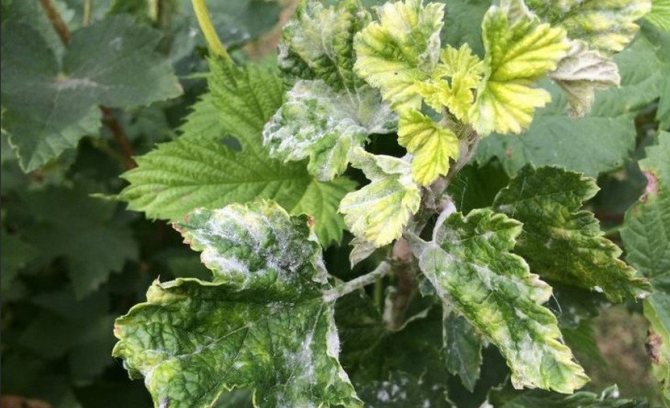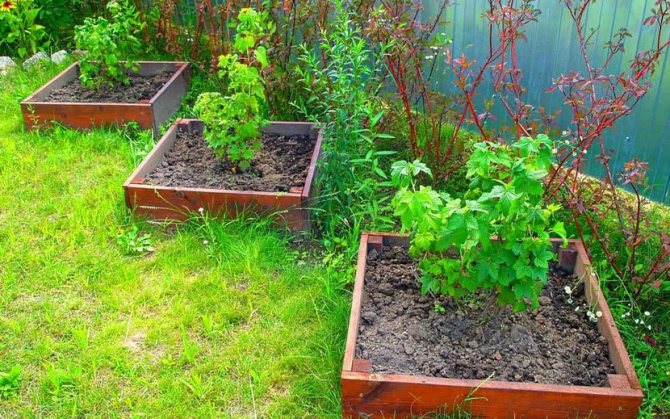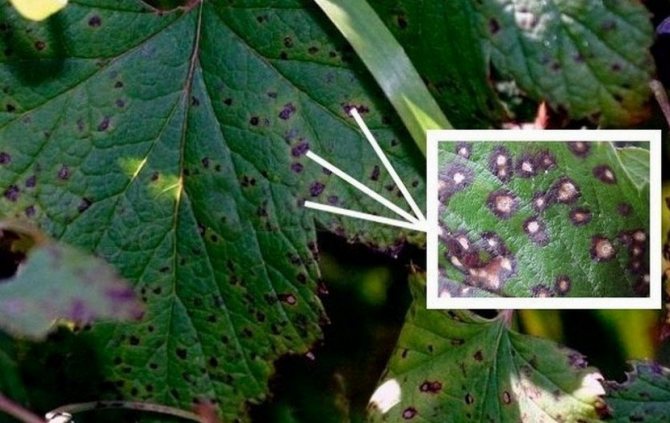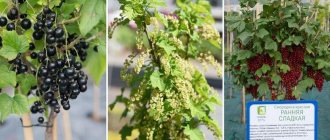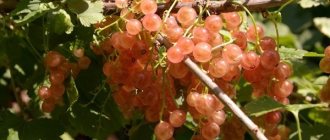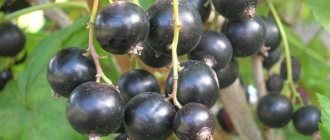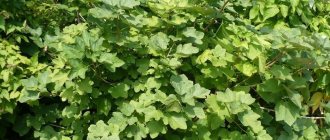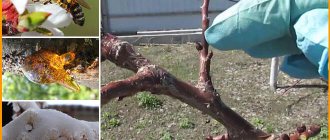Buying high-quality planting material in the nursery or growing it on their own, the summer resident hopes for good harvests in the future. But the time comes for fruiting, and there are no currants on the bushes. At the same time, some gardeners note the good condition of the bush, its normal foliage.
In some cases, currants bloom, but with some kind of purple double flowers and berries do not appear. It happens that flower buds appear, but deformed, similar to a miniature head of cabbage, large and loose. And again, the bush does not please with its harvests.
Black currants may not bear fruit for some reason. And the main ones are: the climatic features of the regions, non-compliance with the rules of planting and care, as well as damage to bushes by pests and diseases. About why black currants do not bear fruit and about the main mistakes of new summer residents, we will tell in this article.
When the currant begins to bear fruit
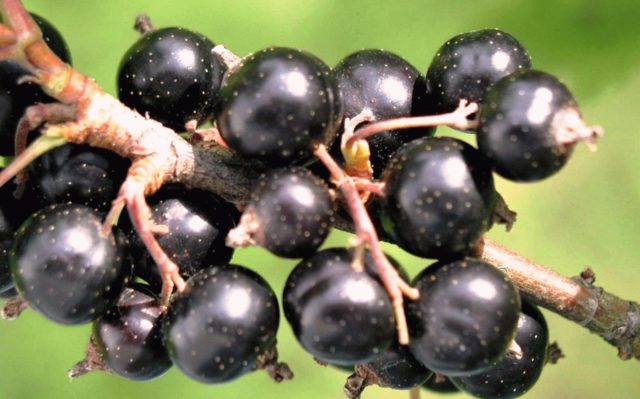
This culture, with proper care, is capable of bearing fruit annually.
The yield of currants depends on many conditions, among which the main ones are the variety and agricultural technology.
She begins to bear fruit in the second year after planting. In the future, the yield increases annually as the bush matures. Black currants begin to bear fruit fully at the age of 4, and red currants - at the 5-6th year. The most productive period of each individual branch is: for the black variety - 4-5 years, for other species - 6-8 years. After that, they weaken, and new shoots grow to replace them.
Important! To increase the yield of the crop, it is necessary to promptly remove old shoots that are losing their potential.
The ripening period of the crop in different varieties:
- the early ones - the first decade of July;
- in the late ones - the middle or the end of July.
This indicator can shift based on the region of growth: for the southern regions - 10 days earlier, and the northern ones - a week later.
The period from the formation of the ovary to the ripening of the berries is 40-45 days. Its duration is influenced by temperature fluctuations, as well as variety. In early species, this phase ranges from 35-40 days, in later species, 40-45 days.
Other reasons
Black currant has a high yield. But it so happens that the bush begins to give few berries or even ceases to bear fruit. This problem may be related to the aging of the bush. As a rule, if there are no fruits on the currants, while they used to please with a good harvest, you probably need to do anti-aging pruning.
Well, in the case when such a measure does not give a result, it means that it is better to get rid of the old shrub and plant new planting material in its place, while pre-cultivating the land and adding a complex of fertilizing to it.
And the last reason why there are no berries on a currant crop is the lack of pollination. If a bush grows in your front garden that does not form ovaries without cross-pollination, then you need to plant honey flowers near the currants.
It is worth noting that, in the overwhelming majority, the culture in question is self-fertile, so this problem is extremely rare.
Why currants don't bloom
The reason that the red or black currants do not bloom may be incorrect placement on the site. This crop prefers open, sunny places, so it stops blooming in the shade under tall trees, which leads to a lack of harvest.
Frostbite of flower buds in early spring from late frosts is also possible. This can happen when planting plants in a ventilated area.
Old bushes, unlike young ones, may not only fail to bear fruit, but even not even bloom. Most often this happens with plants that are 15 years old or more. Such plantings are subject to uprooting with their subsequent replacement with young seedlings.
But sometimes it happens that the bushes are actively developing, but at the same time their flowering is poor or completely absent. This is due to the fact that plants are fattening due to the increased nitrogen content in the soil. The situation can be corrected by introducing phosphorus-potassium fertilizers under the root.
conclusions
This culture is very common in our country. You will have to try hard to find a vegetable garden where there are no currants. Let's still highlight several reasons for the lack of a crop on your beautiful bushes.
- Violation of agricultural techniques and plant planting rules.
- Incorrect selection of a seedling according to the zoning of the variety.
- Improper care. Violation of the irrigation scheme. Poor quality and unsuitable fertilizers. Failure to perform annual pruning.
- Dominance of currants by pests and parasites.
- Infection with diseases such as powdery mildew, etc.
Why currants do not bear fruit
Even with well-developed bushes, it happens that there are no berries on the currants. At the same time, abundant flowering in spring is possible, but in the next two weeks the ovary completely crumbles and, as a result, there is no harvest. This can be due to various reasons, so you need to consider the most common ones.
Wrong variety selected
Often, you can hear complaints from gardeners that even if all the rules of agricultural technology are followed, black or red currants do not bear fruit 2-3 years after planting. This is due to the fact that fruit buds die in winter or buds are damaged as a result of return frosts in spring.
The reason for this is the incorrectly selected variety, depending on the climate of the region. Species intended for cultivation in the southern regions cannot fully bear fruit in the conditions of the Urals, Siberia or northwest Russia. In these varieties, flower buds begin to grow early, and when exposed to low temperatures, they lose their functionality. In addition, last year's shoots can freeze out entirely, and it is on them that the bulk of the crop is formed.
Advice! It is necessary to choose currant varieties taking into account the growing region, only then the plants will fully bloom and bear fruit abundantly.
Violation of landing rules
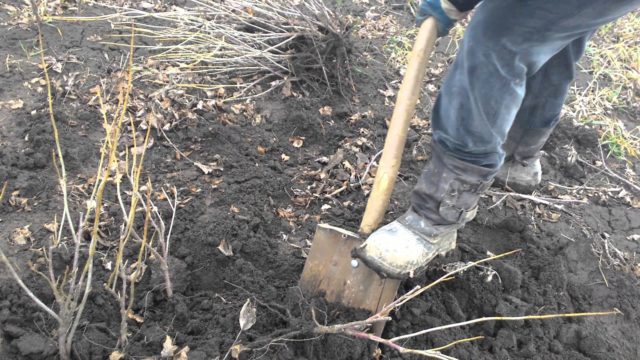

The reason for the lack of fruit may be mistakes made during planting.
An increased level of soil acidity negatively affects the development of currants. Therefore, in order to reduce it, it is necessary to liming the soil a year before planting.
Blackcurrant bushes may not bear fruit as a result of excessive burial of seedlings when planting. This negatively affects their development in general. Therefore, you need to pay attention that the root collar should be at the level of the soil.
Also, the reason may be the thickening of the plantings, as a result of which the plants experience a lack of light. Placing near the fence closer than 1 m leads to the fact that the yield is significantly reduced. For successful fruiting, red currant bushes need to be located at a distance of 1.25 m, and black - 2 m.At the same time, leave aisles 2-2.5 m wide.
Violation of the rules of care
Ignoring the basic requirements of the culture can also be the reason that there are no berries on black or red currants.In hot periods of the year, the plant may experience a lack of moisture. Therefore, as a result of the drying out of the roots, it gets rid of the fruits. To avoid this, in the absence of seasonal precipitation, it is necessary to carry out abundant watering at the root at the rate of 50 liters per plant. Moisten the soil once a week. It is also necessary to loosen the soil at the base to avoid crusting on the surface.
Still fruiting may be absent when nitrogen fertilizers are used in late summer or autumn. This provokes the active growth of young shoots, the wood of which does not have time to ripen before winter. As a result, they freeze out and do not yield the next year's harvest.
The lack of fruit can be caused by damage to the plant by pests or diseases. Therefore, a weakened bush is not able to fully grow, as well as produce a crop.
Thickening of the bush
In order for the currants to constantly bear fruit, it is necessary to timely clean up old shoots. Skeletal branches must be removed at the age of 5-7 years. In this case, no more than 1/3 of the shoots can be cut at a time.
Also, every year you need to remove branches growing in the middle, broken and damaged. Ignoring this rule leads to the fact that the bushes gradually thicken and spend most of the nutrients to maintain the green mass. As a result, the plant lacks light. As a result, the leaves and branches become smaller, and the bush does not bear fruit.
Weather
The inconsistency of climatic conditions can also be the reason why black currants do not bear fruit. Therefore, it is necessary to select varieties taking into account the characteristics of the growing region.
Species with a low level of frost resistance cannot be used for areas with snowless winters, severe frosts and cold winds. Otherwise, it will hardly be possible to wait for the harvest.
Conversely, species intended for cultivation in regions with harsh climates will not be able to fully develop in the sultry heat. They are only able to withstand short-term temperature increases.
Lack of pollinators


It is necessary to plant several types of currants on the site in order to improve the fruit ovary
Despite the fact that currants are considered a self-fertile crop, there are some varieties that need cross-pollination. Therefore, it is necessary that there are several plant species on the site that can provide this. Otherwise, currants may not bear fruit at all or give a meager harvest.
Shrub age
Currants, like any berry bush, have a certain life potential. And as it ages, it ceases to fully bear fruit. Starting from the fifth year of life, the yield gradually decreases, since at this age the main skeletal branches of the bush are already becoming obsolete, and the young shoots replacing them are not able to fully replenish the potential.
You can correct the situation with the help of rejuvenating pruning of the bush. In this case, obsolete shoots must be cut off at the base. This will redirect the strength of the plant to the development of young branches.
Important! Old currant bushes that do not bear fruit for the last 2-3 years must be removed, since no pruning will help
Diseases and pests
This culture is susceptible to various diseases and pests. Therefore, a weakened plant cannot give a generous harvest, since it does not have enough strength for this. It is worth considering the most common problems that may be causing red or black currants to fail.
Kidney mite
This pest belongs to the Eriophyidae family. It is a four-legged insect that cannot be seen with the naked eye due to its microscopic size. The mite for the winter is taken into the fruit buds of the plant.With the arrival of spring, its activity increases, it lays eggs, from which gluttonous larvae then appear.
Important! In one season, the pest breeds 5-6 generations of offspring.
If the bush is severely damaged, the currant does not bear fruit. As a result of the defeat, the amount of leaf mass is sharply reduced, the growth of shoots slows down, berries are not formed.


You can recognize the pest by the too swollen buds in the spring, which stand out from the rest
To fight the tick, you need to spray the foliage with the following preparations:
- Bi-58;
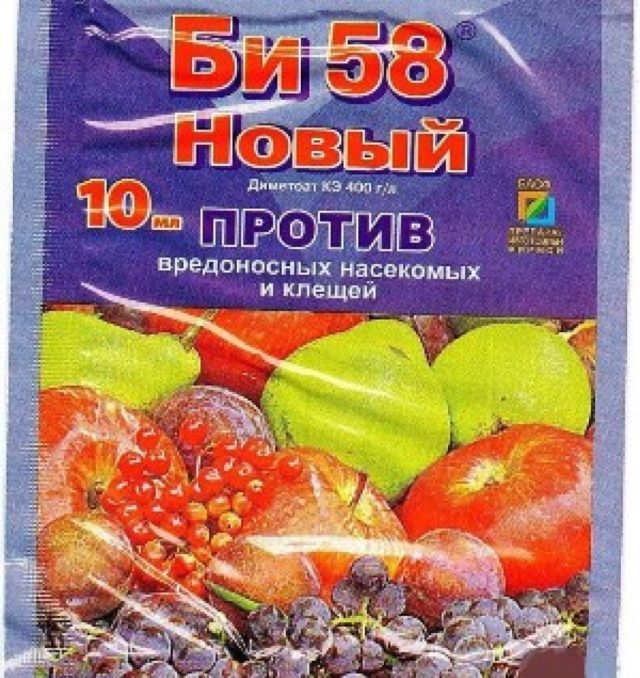

- Actellik;
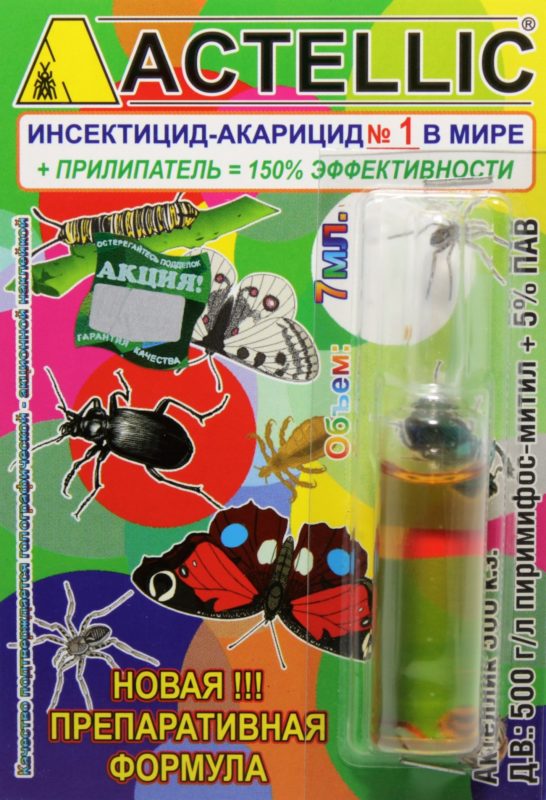

- "Fufanon".
Ants
When the currant is affected by ants, the leaves begin to dry out, the ovary falls off, the overall growth of the bush slows down. At the initial stage, it is possible to identify pests along the characteristic earthen mounds and thin paths near the plant. If these insects are not stopped in a timely manner, then the currants will not bear fruit.


Ants are dangerous for currants in that they carry aphids along the young branches and buds of the plant.
For the fight, it is better to use folk methods. You can cover the nest with cinnamon or baking soda, or place cloves of garlic nearby.
In the absence of a result, it is necessary to use chemicals such as "Brownie" or "Rubit".


Glass-maker
This pest is a small dark purple butterfly with light stripes on the abdomen and transparent wings, the span of which is 2-2.5 cm. The glass beetle is especially active in spring two weeks after the beginning of currant flowering. After this, eggs are laid for the next eight weeks in the damaged areas of the shoots and soft places near the buds.
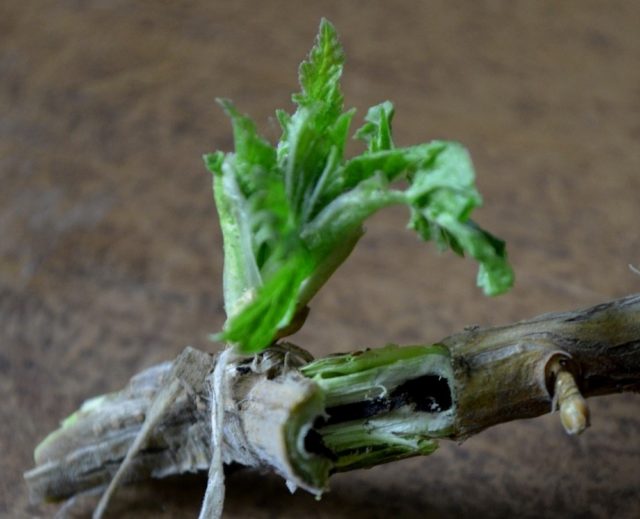

You can recognize the lesion by the black core, which is visible on the cut of the drying shoot.
The greatest danger to the plant is represented by the larvae, which appear on the 10-12th day after that and are introduced into young shoots of currants, feeding on the core. Their life cycle is two years, during which they are able to make moves 50 cm long. This leads to the fact that the damaged branch dries up, and the plant reduces productivity or does not bear fruit at all.
You can get rid of the glass case using the following means:
- "Fufanon";
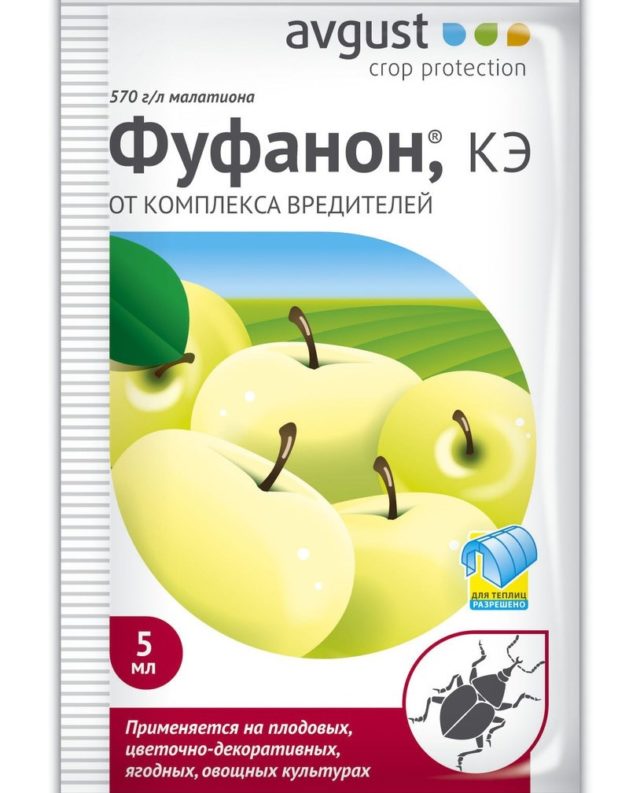

- "Karbofos".
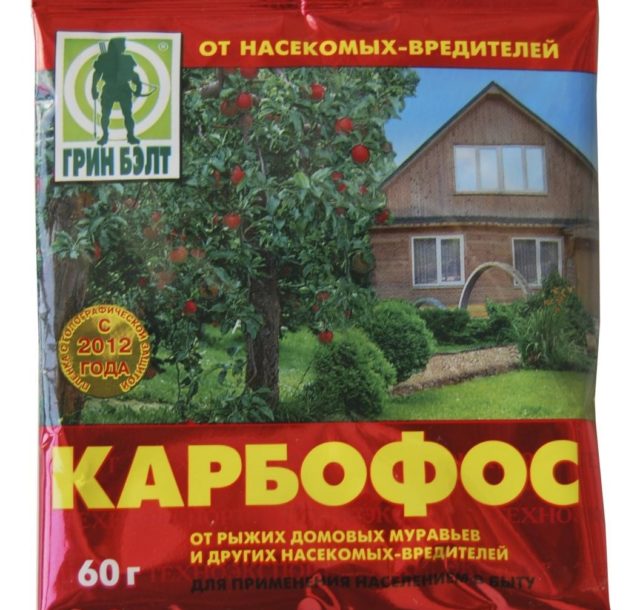

Terry
This disease can also be the reason that the currant does not bear fruit. Terry is dangerous in that it causes the death of the bush.
The main symptoms of the disease:
- deformation of sheet plates;
- lack of a characteristic aroma in the fruit;
- flowers change shape, stretch, acquire a dirty pink hue.
If these symptoms are present, the bush must be uprooted and burned. Currants cannot be planted in this place for the next five years.
Advice! With terry, cutting out the affected branches does not give a positive result.
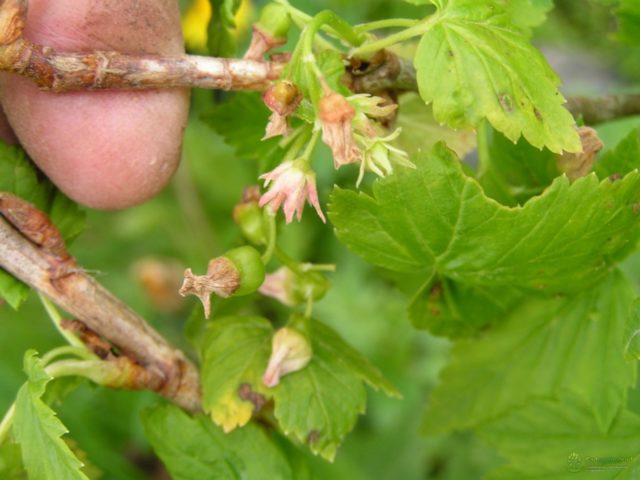

Terry in currants cannot be treated
Choosing a landing site
Those who want to figure out why black currant does not bear fruit should understand that the yield also depends on where the bush is located. Perhaps it was placed in the shade and lacks sunlight. Or maybe, on the contrary, the currant grows along the fence, warming up in extreme heat and killing the fruits that did not have time to ripen.
Bushes are not recommended to grow on acidic soils. The areas where it is planned to grow currants, it is advisable to preliminarily produce. This should be done a year before the start of the proposed planting.
What to do if the currant blooms but does not bear fruit
After the main reason for the lack of fruiting has been established, it is necessary to take measures to eliminate it.
Possible gardener actions:
- transplant a bush if mistakes were made during planting;
- liming the soil to reduce acidity;
- apply ash or potassium-phosphorus fertilizers - to balance nutrients in the soil;
- carry out anti-aging pruning;
- increase watering frequency with a lack of moisture;
- plant pollinators nearby, which will improve the ovary;
- uproot and destroy plants when signs of doubleness appear;
- process currants in case of pest infestation.
Diseases
Currants may be sterile if the bushes are affected by diseases. Such as:
- Powdery mildew. All vegetative organs of the plant are covered with a white powdery coating. The leaves dry up and crumble. Shoots stop growing;
- White leaf spot. White spots form on the leaf blades, which grow and lead to drying of the leaves. This not only reduces the yield in the next year, but can also lead to the termination of fruiting;
- Anthracnose and currant chlorosis. Fungal disease, leading to drying of the leaves, weakening of the bush.
But the most unpleasant thing for a summer resident is reversion or terry. This is a disease in which currants completely cease to bear fruit.
Reversal or terry
The first sign of the disease is the complete loss of a specific currant smell by all vegetative parts of the plant. Then the changes are already visible:
- The leaves become three-lobed, strongly pointed;
- Flowers change color to purple, become terry;
- There are no berries.
Bushes affected by terry are not healed. They must be uprooted and burned.
Prevention measures
In order for the currants to constantly bear fruit and bring a generous harvest, it is necessary to adhere to simple rules.
Basic preventive measures:
- place several varieties of currants on the site, taking into account the provided distance between the bushes;
- choose only zoned varieties that have shown themselves well in the region;
- do not thicken the rows;
- to properly feed, taking into account the stage of development;
- stick to a watering and pruning schedule;
- spray the bushes from pests and diseases in a timely manner.
Table of yield rates by variety and age of the bush
If you have recently begun to plant currants in your area, and you cannot determine by eye whether the harvest is good or not, the yield table below will come to your aid.
| Variety name | Age (years) | Ripening terms | Productivity kg / bush |
| Little Prince (black) | 2 to 12 | Early maturing | 5,5 |
| Bummer (black) | 2 to 12 | Late | 2,5 |
| Exotic (black) | 3 to 12 | Early | 4,5 |
| Natalie (red) | 2 to 14 | Mid-season | 3,5 |
| Red Lake (red) | 3 to 13 | Mid-season | 4 |
| Bayana (white) | 2 to 12 | Late | 3,5 |
| Smolyaninovskaya (white) | 3 to 14 | Mid-season | 4 |
Note! The yield of currants grown in greenhouse conditions, subject to proper care, differs from the yield of ground currants by 0.5-2.5 kilograms from the average.
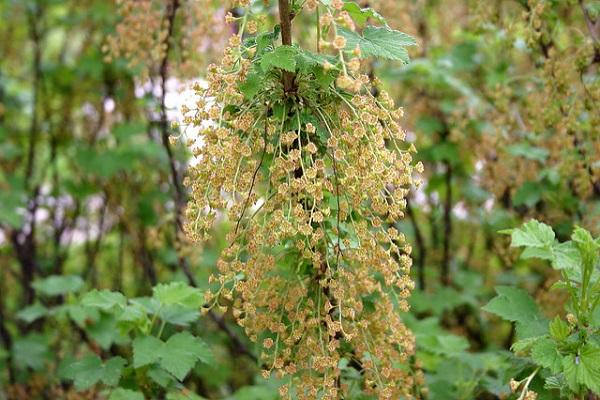

Gardening tips
Meadow
Currants do not tolerate dry soils, so make sure that the soil is always moist. By the beginning of July, your currant bushes will be bright green, beautiful, covered with ripening large berries and absolutely healthy.
Margot
A good way to protect flowering currant plants from frost is by spraying with water. If there is a danger of freezing, the plants are repeatedly (5-6 times) sprayed with water. At the same time, not only the bushes are abundantly irrigated, but also the soil under them. The first spraying begins at the first hour of the night, the second - at the beginning of freezing, the third - immediately after the second.
Popular mistakes in the spring feeding process
Often, inexperienced gardeners make some mistakes when doing garden work on the introduction of micronutrients into the soil. In order for the plant to develop correctly and within the strictly specified time frame, it is recommended to refrain from inaccuracies when carrying out work on fertilizing the site:
- Many novice farmers believe that foliar feeding is not required for the plant. But it is worth remembering that the root system is weakened after winter and needs different types of fertilizers.
- It is not recommended to use nutrient fixers for spraying leaf plates. They tend to damage and deform the delicate structure of the leaf.
- Inaccurate dosage leads to burns on the trunk or death of the entire bush.
- The root fertilizers should be applied so that they do not touch either the foliage, nor the trunk, or the root collar, otherwise, burns and the attachment of pathogenic bacteria are possible.
- It is strictly forbidden to apply liquid root fertilizers on dry soil - they will burn the roots, which will lead to the death of the currants. Before work, the soil substrate should be well saturated with moisture.
- It is imperative to observe climatic conditions - the procedure is performed only on a cloudy day, before sunrise or after the sun goes down the horizon. The first feeding is performed at a temperature of at least +10 0 С.
Thus, spring feeding for currants is very important. You should adhere to the correct dosage and follow the recommendations for applying fertilizers to the soil, otherwise you can provoke not only burns, but also the death of currants. Nutrients introduced on time have a beneficial effect on the quantity and quality of the crop.
Effective ways to increase yields
To increase the number of berries that form on the branches, it is recommended:
- mulch the soil around the bushes, especially in the fall;
- the soil is periodically loosened, breaking large clods of earth;
- water the plantation as the soil dries. Watering is especially important 2-3 weeks before and after picking berries;
- remove old, dry branches that stop growing;
- cross different varieties of currants, getting more stable combinations.
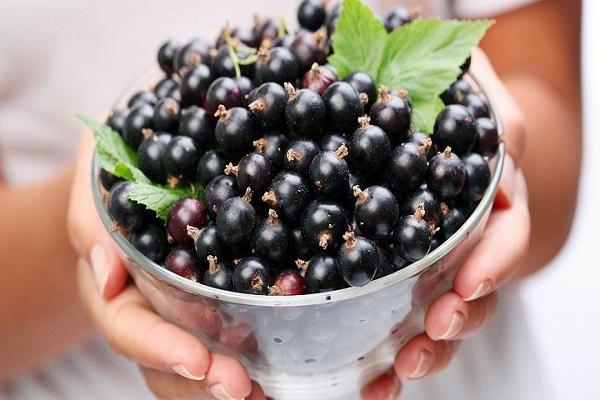

Let's sum up
The currant is unpretentious, for several years it can pamper us with delicious sweet berries, receiving nothing in return, but it does not tolerate complete indifference. We must pay attention to her and take care of her health. The currant will thank us with a wonderful harvest.
Hope you enjoyed this article., Planting and caring for currants. 5 tips from my own experience... Please read our article Roses: planting and care in the open field for beginners in the suburbs.
Join our group on Odnoklassniki to receive announcements of new articles directly to the feed.
Mulch and green manure as natural fertilizer
Mulching is often perceived as a decorative or protective technique. Siderata are the best helpers if there is a need to naturally increase soil fertility. Some plants are excellent natural fertilizers. Sown between rows of legumes (lupine, vetch), cereals (oats, rye), phacelia or white mustard will become mulch and fertilizer after mowing. This care is natural and will not harm the plants.
A layer of mulch helps to retain soil moisture, protect the currant root system from overheating or severe frosts, and prevents weeds from germinating. Often, various organic residues are used as mulch: sawdust, peat, compost, needles, plant leaves, cut grass. These substances are gradually decomposed, enriching the soil with the necessary nutritional properties. With regular mulching and constant renewal of this layer, you can completely abandon the introduction of organic substances, since mulch will provide the currants with everything they need.
However, when using sawdust and needles as a mulching material, it must be remembered that they acidify the soil, and currants like soils with neutral acidity. In this case, maintenance should include additional lime or wood ash to prevent acidification of the soil.
Experienced gardener tips: bush plant care




